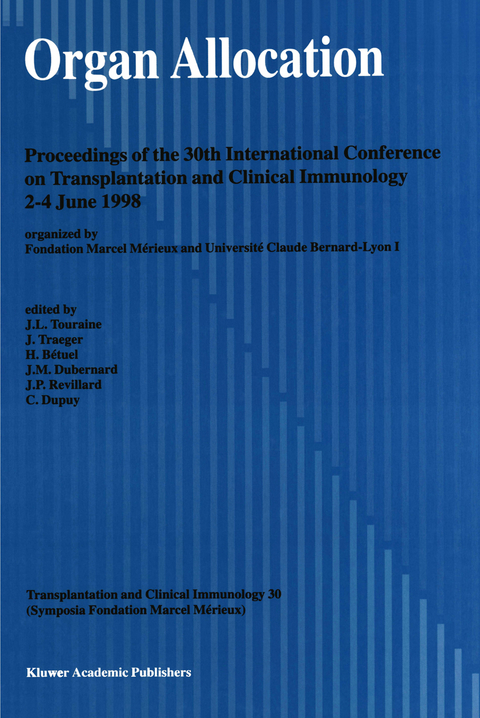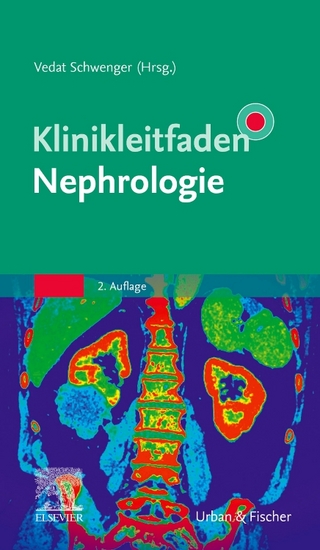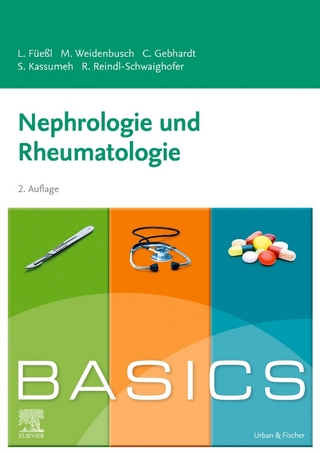
Organ Allocation
Springer (Verlag)
978-94-010-6091-2 (ISBN)
The pool of organs for transplantation is stable, and therefore insufficient to cope with the growing demand. To adjust demand and resources in the most equitable way, organ procurement and allocation have been organized nationally and often across borders. The national and international organ exchange programs were studied and discussed during the Congress on Organ Allocation, from which this book is derived.
This book describes the state of the art in the management of waiting lists and the allocation of organs in transplantation. It includes chapters on the possibilities of expanding the pool of available cadaver organs. It also analyzes the results of transplantation of cadaver organs from older donors and marginal, non-heart beating donors.
Transplantation policies based on the offering of organs by living donors are also described, as is the impact of delayed graft function on organ allocation.
1: Overview of organ allocation policies and strategies in different countries.- 1. Principles for allocation of cadaver organs to transplant recipients and coordinating procedures in Spain.- 2. Principles and practice of cadaver organ allocation in France.- 3. Principles for allocation of cadaver organs to transplant recipients in Italy.- 4. Allocation of cadaver organs to transplant recipients in Scandiatransplant.- 5. Principles for allocation of cadaver organs to transplant recipients in the USA (UNOS).- 6. Allocation of kidneys in the UK.- 2: Principles underlying current policies in organ allocation.- 7. What to expect from a good kidney allocation system.- 8. Allocation of cadaver organs to transplant recipients in Eurotransplant: principles and policies, Anno 1998.- 9. Increasing kidney supply as the best solution to the allocation problem.- 10. Strategies in organ donation.- 11. World Health Organization guidelines on transplantation and the WHO Task Force.- 3: Waiting list.- The French liver transplant waiting list: 5-year analysis (1992–1996).- 13. Predictors of multiple listing for cadaver kidney transplantation and the effects of a ban on multiple listing in the United States — a summary.- 14. Allocation of kidneys to patients on the transplant waiting list: a simulation-based policy model.- 15. Factors influencing early placement on the kidney transplant waiting list in the United States.- 16. The organ transplant waiting list in France.- 4: At-risk donors.- 17. Expanded donor pool.- 18. Non heart-beating donors.- 19. How to reconcile viral safety and efficacy in organ procurement.- 20. The problem of infectious transmission from donors in organ transplantation.- 21. Further readings on allocation of organs from at-risk donors.- 5: Ischemia reperfusionand organ allocation.- 22. The inflammatory cascade of liver ischemia and reperfusion: from the donor to the recipient.- 23. The role of T-cell costimulatory pathways in ischemia—reperfusion injury.- 24. Interest in an anti-LFA-1 monoclonal antibody in the prevention of reperfusion injury in kidney transplantation.- 25. Preservation solution in heart transplantation.- 26. The impact of ischemia—reperfusion injury on specific and non-specific, early and late chronic events after organ transplantation.- 27. Pharmacological intervention to decrease ischemia—reperfusion injury.- 6: Living donors and organ allocation.- 28. Organ transplantation in Islam.- 29. Liver donor transplantation in Sweden and other Nordic countries with emphasis on the benefits of the procedure.- 30. Kidney exchange programs: an expanded view of the ethical issues.- 31. Unconventional living kidney donors.- Index of names.
| Reihe/Serie | Transplantation and Clinical Immunology ; 30 |
|---|---|
| Zusatzinfo | XI, 311 p. |
| Verlagsort | Dordrecht |
| Sprache | englisch |
| Maße | 160 x 240 mm |
| Themenwelt | Medizinische Fachgebiete ► Innere Medizin ► Nephrologie |
| ISBN-10 | 94-010-6091-6 / 9401060916 |
| ISBN-13 | 978-94-010-6091-2 / 9789401060912 |
| Zustand | Neuware |
| Haben Sie eine Frage zum Produkt? |
aus dem Bereich


